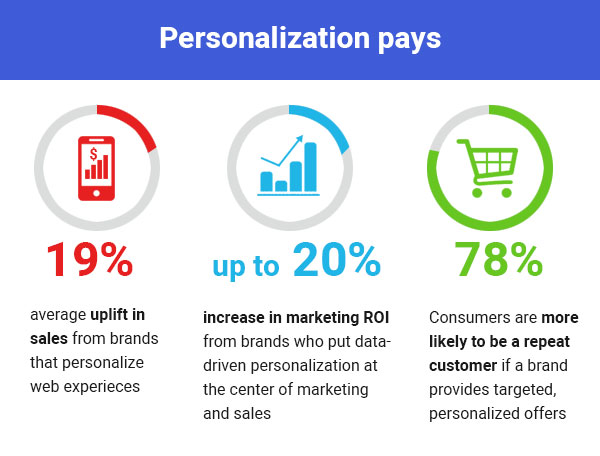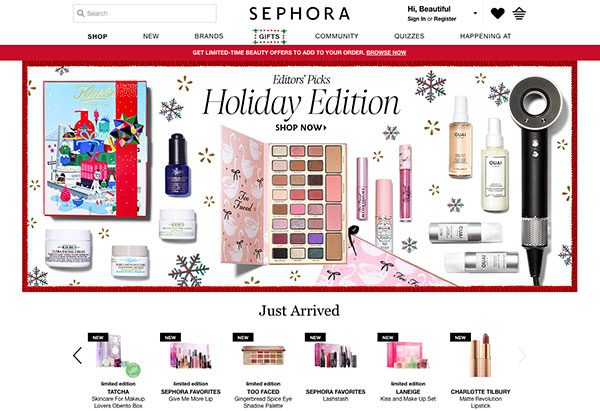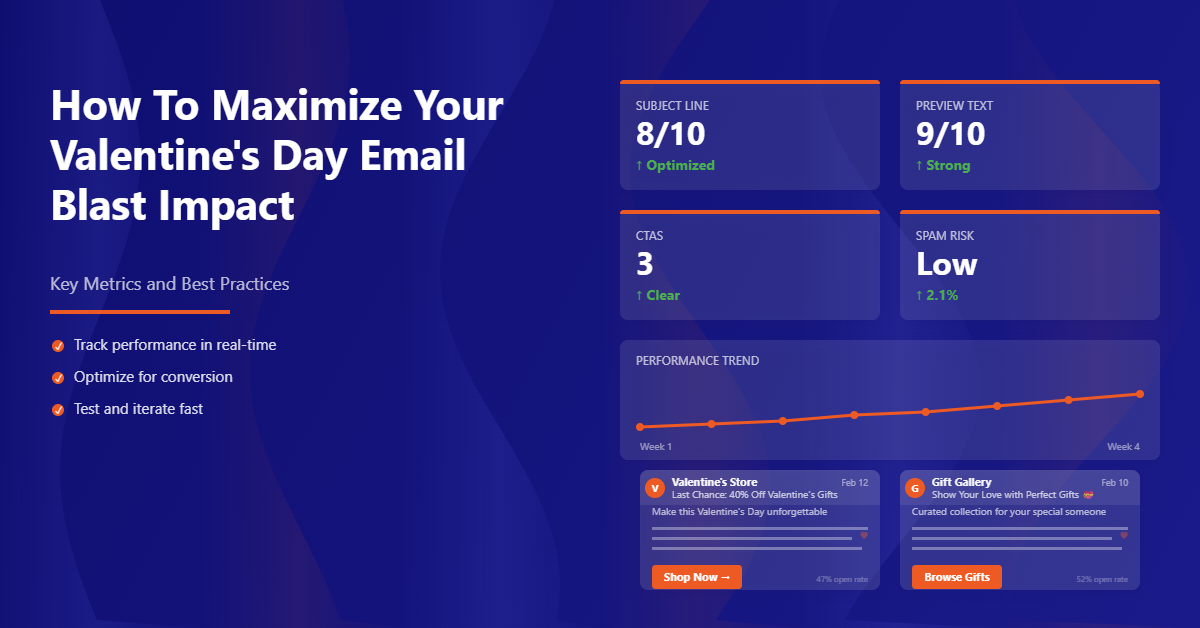Holiday Season 2020 is here! Is your Ecommerce store ready with everything your shoppers are looking for? Getting ready with promotions and Ecommerce marketing strategies during the holiday season is good. But there is one more important aspect that you need to include in your holiday Ecommerce marketing strategy for the holiday season 2020 – offering the best user experience to your holiday shoppers.
Every consumer craves for a personalized experience when they shop online. Your website should be equipped and ready to deliver that experience. To get through the holiday season traffic successfully, your Ecommerce marketing strategy should include getting your store be ready with
- Solid infrastructure
- Industry-leading uptime
- Updated third-party integrations
Here are some of the key aspects for you to update your site to meet the customer’s expectations before the holiday season 2020 rush begins.
1) Conduct an audit to analyze the overall store experience
Work on creating a remarkable website design to bring your brand to life and offer the best customer experience.
Building a personalized shopping experience for your customers does not end with offering them what they want. It is also about trying to cross-sell and upsell different holiday sale products. By doing this you can directly complement the sale for visiting customers.

You can create a lasting impression and impact by offering product recommendations that resonate with that individual shopper. Gathering vital shopper data points that are specific to a customer such as product search, shopping cart, and product histories will help you boost sales and increase your overall conversion rate especially during the holiday season.
Evaluate your infrastructure
The holiday season brings in a surge in traffic and transactions. Your Ecommerce website should be prepared to handle this sudden spike. Spend more time and effort on testing your servers and make sure it is ready. If you are finding this to be challenging, reach out to your technology partner – companies that can help you with website testing and determining visitors counts and traffic patterns.
Check your site speed
The longer the page loading time, the higher are the bounce rates. The page load time should be under three seconds. If you cannot bring your page load time to an optimum number, get the help of tools that can offer you recommendations on how to improve this. Having too many plugins and apps that need to load can also slow down your site speed.
Evaluate your third-party integrations
Don’t forget your third-party integrations. They have to be up-to-date. Test the existing ones and try to avoid adding new ones. Last-minute add ons can break your navigation flow and slow down your site.
Enable cart abandonment notifications
Shopping cart abandonment becomes higher, especially during the holiday season. You can send them a well-timed push notification that will remind them of the products they left behind. These notifications have double and sometimes triple the click-through-rate of a targeted email.
2) Upgrade your merchandising strategy
The holiday season 2020 is all about consumers shopping online. You have to go that extra mile to grab your shopper’s attention.
Nearly 80% of mobile users’ purchasing decisions are influenced by the mobile channel. This makes creating a seamless mobile experience more important than ever. Mobile optimization included understanding exactly where mobile access is fitting into the buying journey, how shoppers are using it, and more importantly why. Creating a seamless mobile experience is vital. It just takes 0.05 seconds for shoppers to abandon your website and 38% of them will cease to engage with your Ecommerce store if the content or the design does not meet their expectations.
The key here is to analyze each visitor’s unique shopping behavior and deliver content and product recommendations based on that to ensure whatever is produced is relevant to them.
During competitive times like the holiday season, if you don’t have products relevant to show your shoppers right away, you are losing sales instantly. Follow these best practices for creating robust online merchandising strategies to capture your shoppers’ attention immediately.
Display your holiday products in an attractive layout
Research, plan, and get ready with the products that you’re going to sell this holiday season. Bucket them into different holiday categories to make the shopping experience more convenient for the shopper. Include seasonal favorites to attract shoppers.

Once you’re ready with the list of products for the holiday season, think about how to display these seasonal items on your site. For instance, create a holiday-specific category in your site navigation and make shopping fun by organizing gifts in one specific category.
Personalize your shoppers’ experiences
For achieving the best personalization, content is still the key. By analyzing behavioral and contextual customer data, as well as business-related data like margin and inventory, merchants can surface relevant products to inspire customers and encourage them to make a purchase.
Product recommendations based on customer data such as demographics or geographic location have led to a significant increase in the conversion rate and has also resulted in low cart abandonment.
For example, say particular winter wear is trending in New York City for the Christmas season 2020. Women of a certain age that live in the city can be targeted with content related to that must-have winter wear. By doing this, you are helping them remove an entire step (searching for the winter wear) in their shopping journey and simultaneously leading them deeper into the website (and closer to checkout).
Ecommerce stores can also gain insights from shoppers’ past browsing histories to generate content relevant to their shopping experience. For example, you can remind them of the perfect gift that they had purchased the previous year during the holiday season.
If you invest time in understanding the landscape of gifting during the holidays, the context and behavior of each shopper, it will help you build stories that can guide site visitors through relevant product recommendations. Try location-based gift recommendations on each category page for a better shopping experience.
Tune site searches for each customer
Boost your on-site search with the help of SEO used for search data. Ensure your website’s search results show accurate products to help your customers find exactly what they’re looking for. A seamless shopping experience never goes unnoticed.
One great thing about updating your own search is that you’ve got complete control over the keywords, pages, and results. Use it wisely to your advantage while creating a frictionless experience for holiday shoppers.
3) Optimize the checkout page
When your customer reaches the checkout page, it means they have almost decided to make a purchase. Optimizing your checkout page will make the process as smooth as possible for them. This will ensure that your customers don’t leave before completing the purchase.
Focus on creating a seamless checkout experience by working on certain aspects such as having one checkout page, enabling guest checkout, and offering several payment options.
Simplify checkout to one page
Structuring all your checkout-related forms on a single page makes the process easier and quicker for shoppers. Loading a single page, waiting for multiple pages to load especially on a mobile device can be a real game-changer. Never give customers time to leave your site. Everything boils down to one goal: customer satisfaction. A single checkout page adds to the overall user experience and your customers will walk away feeling satisfied with the journey.

Allow guest checkout
Anonymous checkouts are very important, especially for first-time customers. Online shopping requires trust in the Ecommerce brand, and many shoppers don’t feel comfortable sharing their contact information during their first visit to the website.

Added steps to registration will also interrupt the shopping process. Once customers decide to buy, they want the checkout process to be as easy as possible. This should be the aim as well as an Ecommerce brand. Checking out as a guest will solve this problem and is also often quicker than creating an account.
Offer multiple payment options
We have almost reached the end of the checkout process and your customer is ready to enter their payment information, only to find out that you don’t provide their payment method of choice. Your holiday shopper will be frustrated and abandon the process immediately. Consider offering more payment options such as PayPal/Venmo or American Express. Providing as many secure payment options as possible is convenient for the customer and they’ll appreciate being able to pay however they wish.

Enable multi-recipient functionality
To avoid making your customers place a plethora of orders for holiday gifts, enable multi-recipient functionality to remove this unnecessary stress for them during the busy holiday season. The multi-recipient functionality will allow customers to order and send specific items to other addresses, making your store a one-stop-shop.
Wrap up!
Ensuring your holiday shoppers have the most comfortable and seamless shopping experience is crucial for your holiday sales. Especially during this holiday season 2020 when all your customers are online, ensure you are ready with all the preparations discussed above. Customers tend to be more loyal to brands that make shopping easier for them especially during the holidays. So, offer them the best shopping experience.
Check out our other blogs on Holiday Email Marketing, Holiday Email Templates, and Holiday Marketing Strategies to nail Holiday Readiness 2020!




